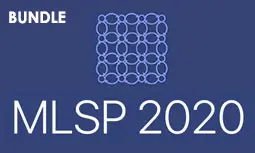VISIBLE LIGHT-BASED ROBUST POSITIONING UNDER DETECTOR ORIENTATION UNCERTAINTY: A GABOR CONVOLUTIONAL NETWORK-BASED APPROACH EXTRACTING STABLE TEXTURE FEATURES
Bingpeng Zhou,Risto Wichman
-
Members: FreeSPS
IEEE Members: $11.00
Non-members: $15.00Length: 14:09
21 Sep 2020
In this paper, we are interested in visible light-based positioning (VLP) of detectors with unknown orientations. Conventional VLP methods depend on a well-defined signal propagation model with perfectly known parameters. Thus, uncertainty of detector orientation degrades their VLP performances. To address this challenge, we propose a machine learning (ML)-based VLP solution, which comprises a Gabor convolutional neural network (GCNN) and a fully-connected neural network (FCNN). We observe spatial texture structures in received visible light signals, which depend on the detector location, and hence can be exploited to enhance VLP performance. GCNN extracts rotation-invariant features of visible light samples under uncertain detector orientations, using diverse Gabor kernels. FCNN captures informative clustering structures of obtained texture features. It is shown that the proposed ML-based VLP method outperforms the conventional VLP baselines.



